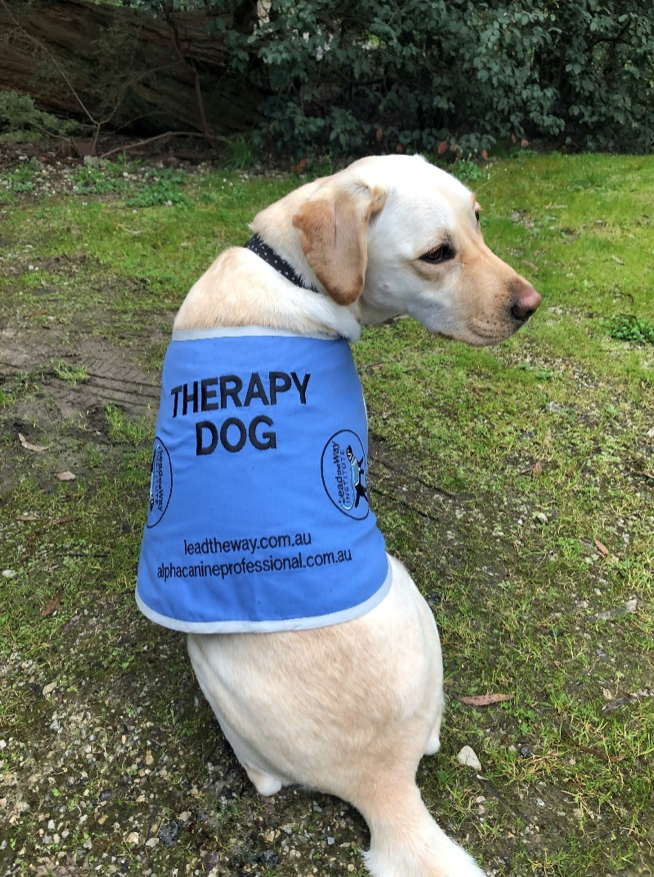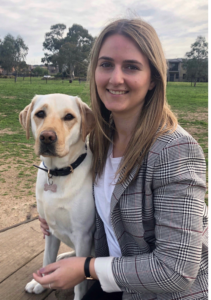Animal-assisted therapy at Your Mind Matters Psychology Services

Animal-assisted therapy, or AAT involves a situation where an animal is assisting a therapist to reach a specific goal with a client. Many animals can assist in a therapeutic environment, such as dogs, cats, horses, and even rabbits! Research has shown that there are many benefits to animal-assisted therapy. The most consistent improvements have been found in the following four areas: autism spectrum disorder, particularly with social interactions, medical difficulties, behavioural problems such as verbal resistance and compliance with rules, and emotional wellbeing (anxiety and depression). And best of all, dogs are not judgemental. You could be having a terrible day, and a dog will still love you and seek your attention, no matter what. They will also keep all of the things they hear in your session a secret!
My dog, Luna, who is a three-year-old Labrador Retriever started working with me in October 2019, when she received her therapy dog certification. Since then, I have been fortunate enough to see how much she has made a difference for our clients in session in many different ways. Here are some ways having a therapy dog in session has assisted my own clients. Luna has helped with engagement and attendance. Many children and adolescents we see find comfort in her presence, and would otherwise not engage in psychology sessions at all, or would do so with great difficulty and resistance. Luna is a very excitable dog, and this has proven to be very useful for emotion regulation. As the therapist, I often draw parallels between Luna’s emotions and behaviour, and how the child feels when walking through the door, and children will usually help Luna regulate herself, by doing so themselves. Finally, in session, I have been able to practice social skills and assertiveness with children and adolescents by using Luna on the receiving end, as this is often less confronting for a shy individual. Some individuals also simply prefer to have an animal in session, as they find eye contact and a one-on-one environment confronting, and the presence of an animal provides comfort.
It is important to know the different types of working dogs. For example, as mentioned above, Luna completed training which allows her to use the title “Therapy Dog”. This means that Luna is allowed to come to work with me every day and help me in therapy sessions. Luna wears a vest to help others identify what her role is. Wearing a therapy dog vest also signals people that she is a friendly dog, and that she has been trained to deal and cope with some potentially stressful situations. Often people get confused and think that being a therapy dog gives Luna the legal right to public access, such as shopping centres and movies. However, this is strictly something only service dogs, also known as assistance dogs are allowed to do. Other working roles taken on by dogs include emotional support dogs, companion dogs and facility dogs.
It’s always important to ask any dog owner if you can pat their dog, before getting too close, and this is especially important for little kids. If you see Luna in the waiting area at Your Mind Matters, she would love to say hello (but be sure to check-in with me first to make sure it’s ok!)
References
Nimer, J., and Lundahl, B. (2007). Animal-assisted therapy: a meta-analysis. Anthrozoos 20, 225–238.
https://leadthewayinstitute.com.au/home/

